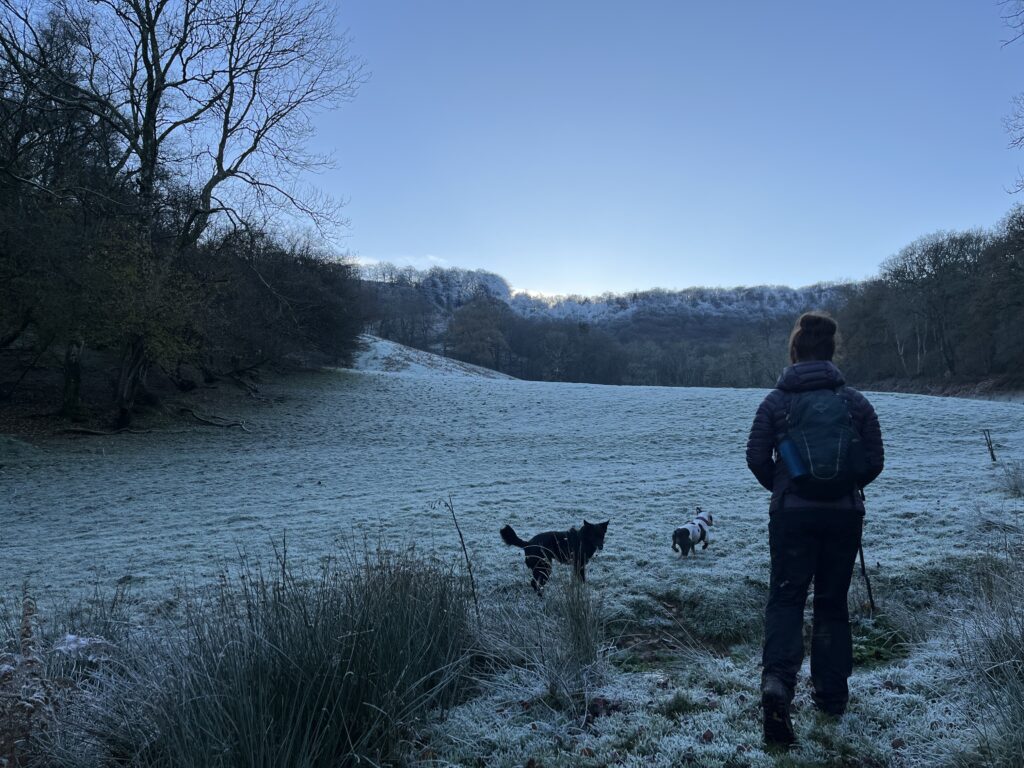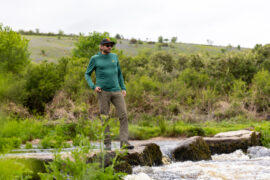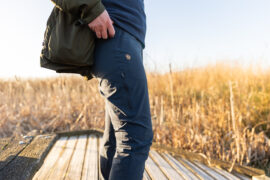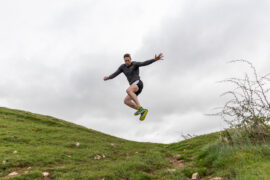Since its inception 50 years ago, Patagonia has been focused on producing sustainable, hard-wearing and multi-functional clothing and gear for outdoor activities. What sets Patagonia apart from other brands is their long-term commitment to sustainability and their involvement in initiatives such as the Sustainable Apparel Coalition and 1% For The Planet as well as the Patagonia Action Works, which for the last 40 years, has worked with grassroots activists to work on projects tackling the environmental crisis.
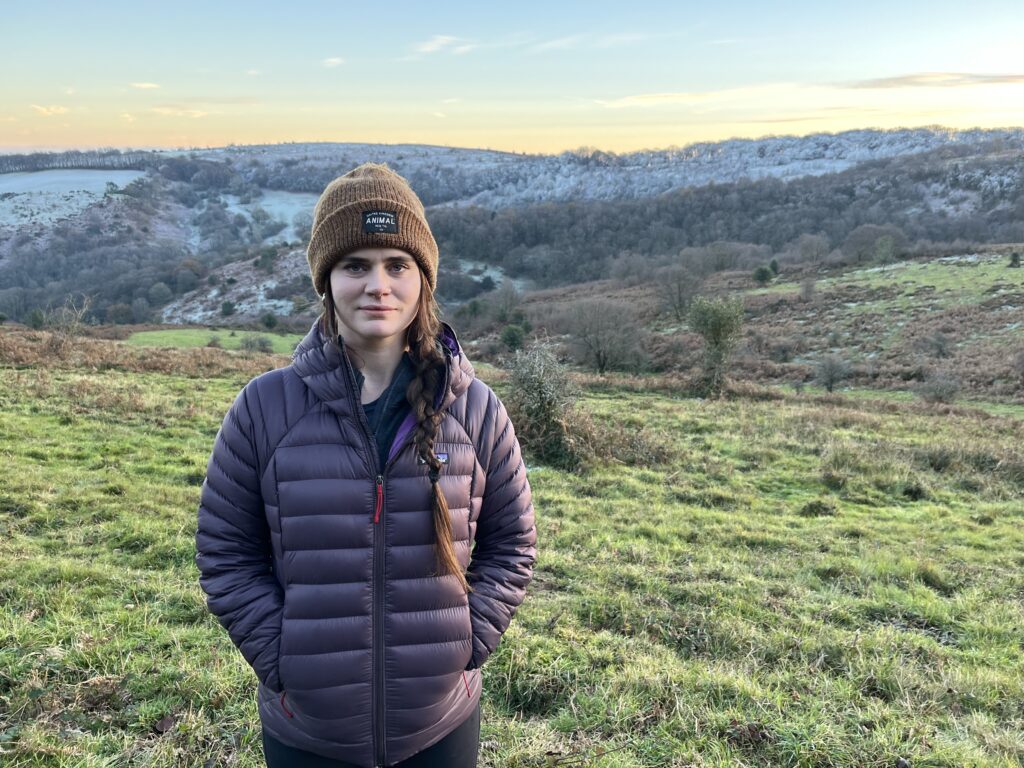
I was lucky enough to have the opportunity to test out the Patagonia Women’s Down Sweater Hoody in the unique and stylish new Obsidian Plum colour. As we are heading into winter and the temperatures have finally dropped, it has been the perfect time to test out a versatile insulated down jacket. The Down Sweater Hoody has been revamped for this season featuring more sustainable fabric and some design changes, as well as some new colour options!
The biggest update for the new season is the shell of the jacket; made from Patagonia’s new NetPlus® fabric, which is a 100% post-consumer recycled nylon ripstop made from recycled fishing nets. As well as helping to reduce one of the main contributors to ocean pollution, the fabric is also comfortable, soft, and durable. To add to its environmental credits, it is finished with a PFC-free DWR coating, which means that it is produced without the use of harmful perfluorocarbons, this sets it apart from some other brands in the industry as it is not widely used practice. Finally, providing the warmth of the jacket is 800-fill-power down certified to the Responsible Down Standard by Control Union, ensuring that it has been sourced ethically and responsibly.
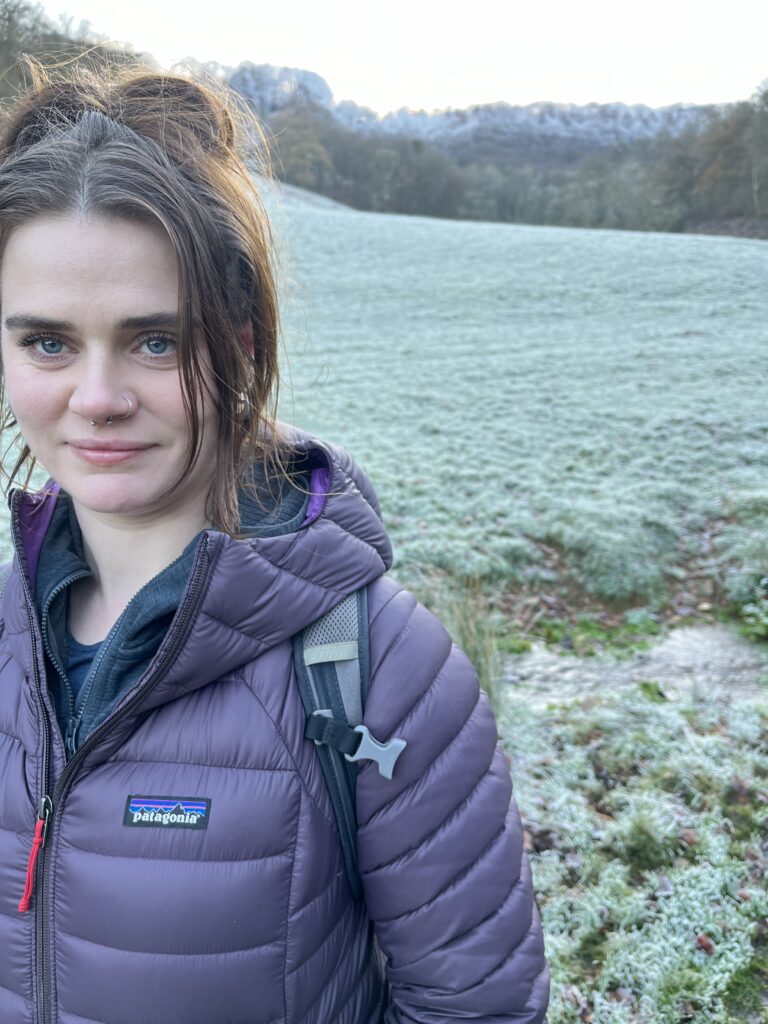
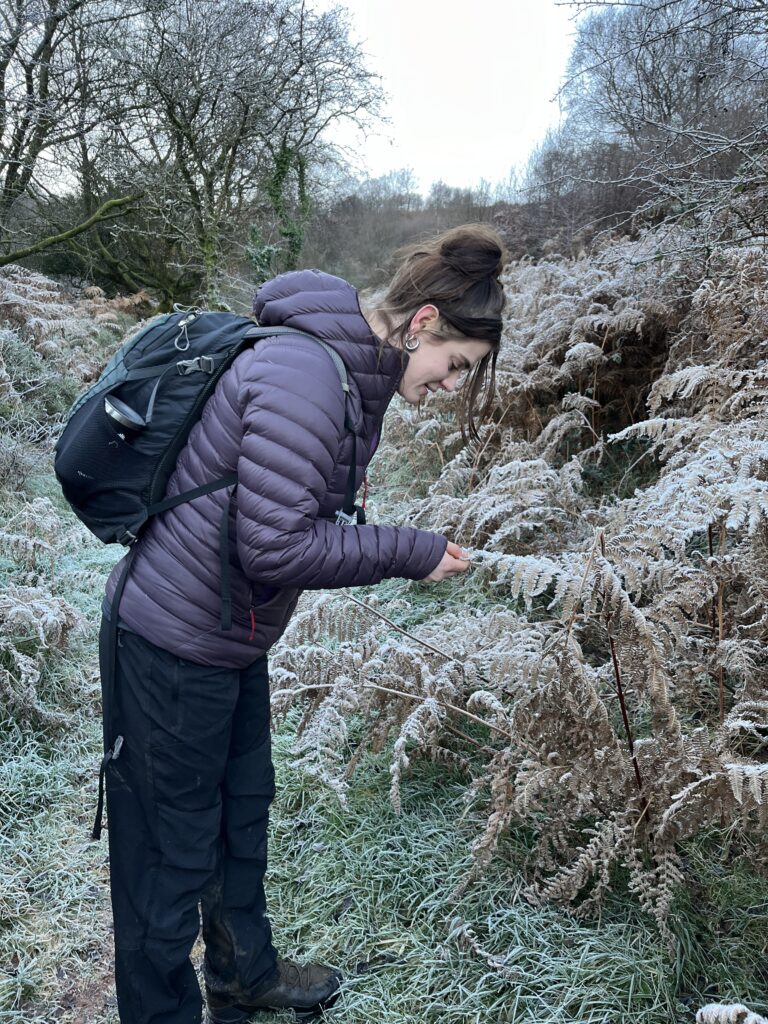
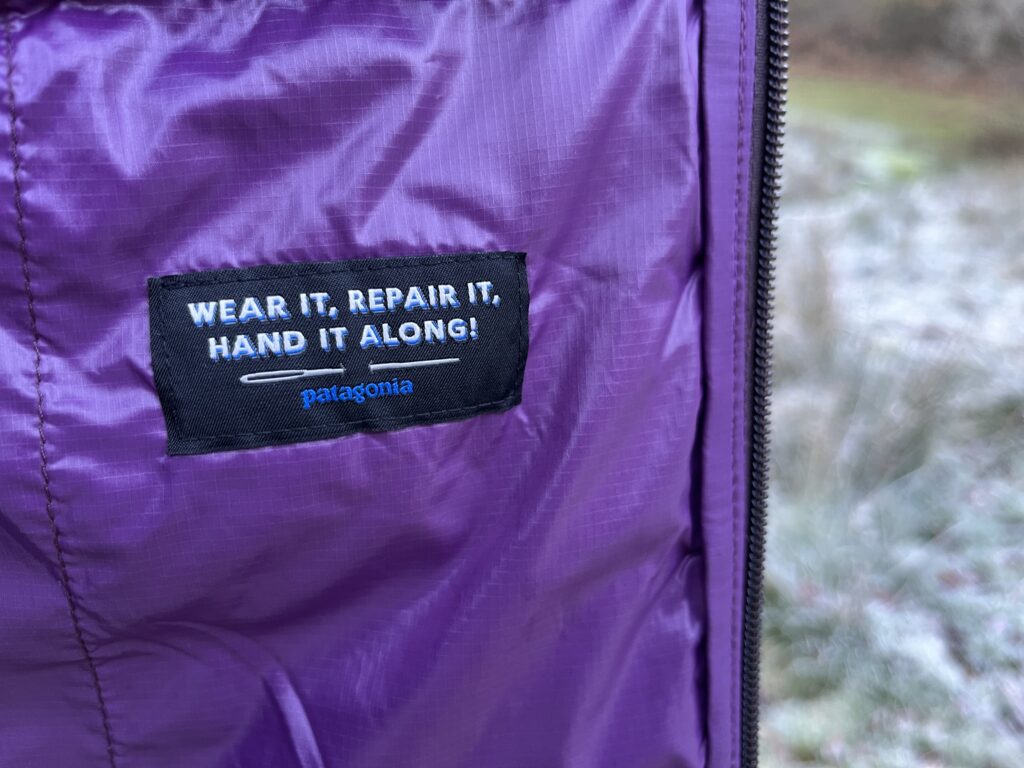
The jacket is a regular fit, and allows room for a mid-layer comfortably without being too boxy, which helps ensure it also layers well underneath a shell for any downpours. This helps to keep the jacket multifunctional, allowing it to be used as an outer layer for a cold hike or as an extra layer of warmth when out in the rain under a shell. The horizontal stitching on the sewn through baffles are slightly wider around the torso for increased warmth, the narrower baffles on the side panels and arms as well as angled baffles on the elbows help to keep the jacket fitted without restricting movement. To further prevent the cold getting in, the jacket features a high collar and zips up above the chin and with the single pull adjustable hood up, leaving only a small section of your face uncovered. The nylon bound elasticated cuffs on the sleeves and hem help to seal in the warmth further with the hem adjustment allowing you to adjust this to fit your specific body needs.
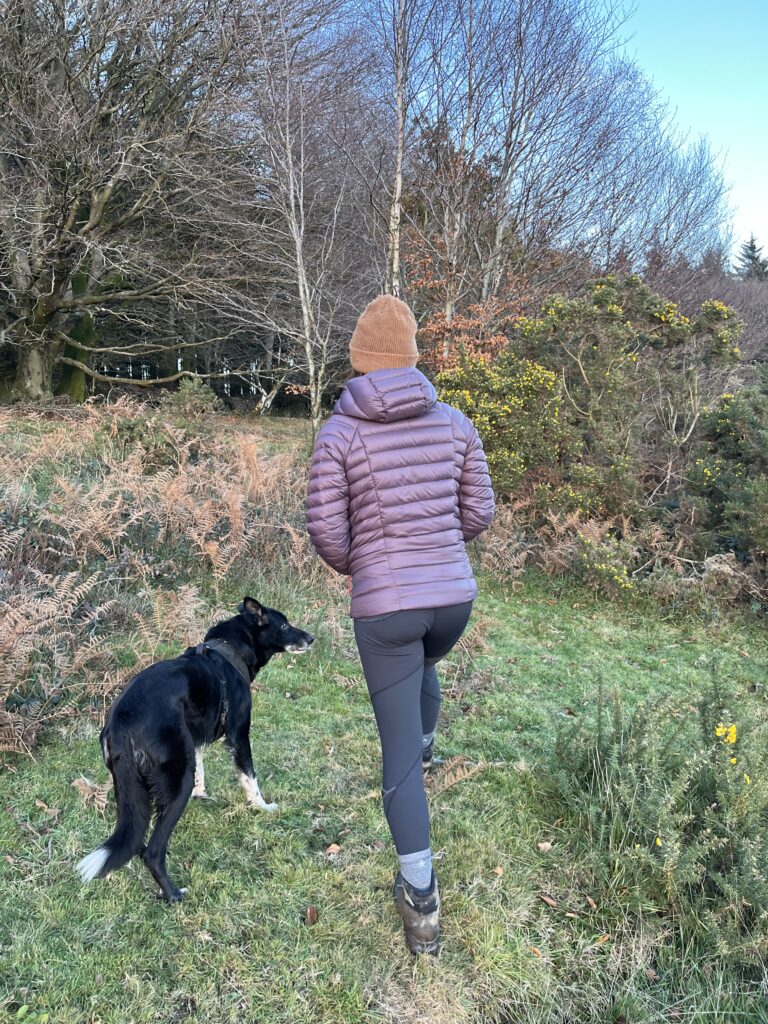
For storage needs, this jacket features a range of different options, with two zippered hand-warmer pockets on the sides and an internal zippered chest pocket, perfect for storing your valuables as well as doubling as a stuff sack. And a new addition to the Down Sweater is the two internal drop-in style pockets to provide extra storage, I found these to be great for storing your gloves or hat when not in use. Included with the jacket is some on-the-go repair patches, a nice touch as the 20-denier fabric is more delicate and prone to damage than some other similar products from other brands. I also like the that this adds to ethos of getting the most out of your gear and repairing where possible.
Over the last few months, I have got much use out of this jacket on the chilly morning dog walks as well as day hikes on the Quantocks, and have had the chance to test it out both as an outer layer and underneath a waterproof jacket in the rain. I feel it performed particularly well and kept me warmer and comfier with the higher down fill power than the other comparable down jacket I own, the Rab Microlight Alpine. However, the Mircolight does get the edge in weather protection, with the Hydrophobic coating to the down and the 30-denier Pertex shell, meaning it would be fare better in a sudden and unexpected downpour!
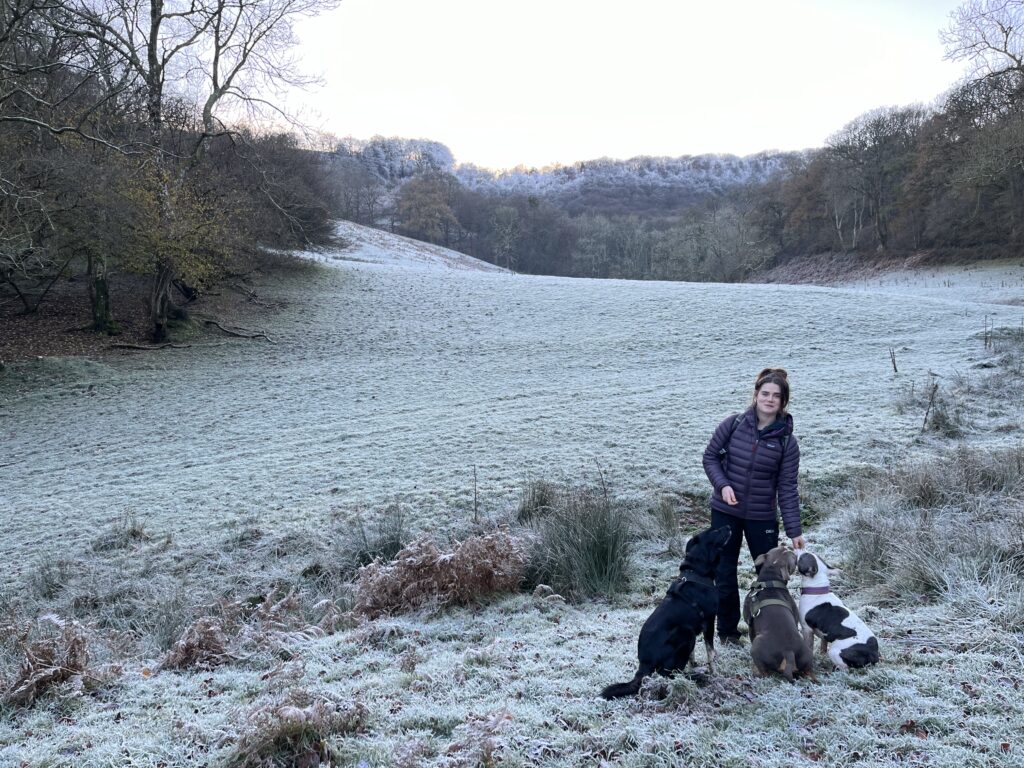
Although the Down Sweater Hoody does have a heftier price tag than some of the similar products on the market (such as the Microlight), it does offer a good warmth to weight ratio and has the benefit of a very comfortable and multifunctional fit. I do think what makes the investment in this jacket the most worthwhile is the sustainable and ethical credits of both Patagonia as a company and the construction and materials of the jacket itself.
In conclusion I would definitely recommend this jacket to anyone who is looking for a comfortable and practical down jacket for a variety of uses and wants to invest in a product and company that cares about the environment.

